#faerie folklore
Text

#fairycore#fairy#fairy lore#fairy aesthetic#fae#faery#mythology#fairies#witch#witchblr#pagan#paganism#witchcraft#fairy witch#fairy witchcraft#faerie lore#faerie folk#faerie folklore#faerie#fae folk
479 notes
·
View notes
Note
hello,
this may sound like a silly question, but is it possible for someone who is not Irish, scottish, or British to be contacted by the Fae?
thank you!
Hello there.
This isn't a silly question, but it's one I will have to expound on a bit, as opposed to just giving a yes or no answer. I'll also preface this by saying that my personal beliefs will likely be contentious to some, and I encourage readers to take what they find useful and leave the rest if it conflicts with their own paradigm. Most of this comes from a mixture of personal gnosis and theory, and I am not attempting to assert authority on the subject or claim academic accuracy, so please keep that in mind.
To put it very simply, I believe that the Fae are present in every region of the world, and I have highly syncretic beliefs about the nature of the Fae and other spirits in general. For me, the folkloric specifics come down to cultural lenses and the ways that long-term worship and perception shape the expectations and manifestations of the Gloaming Folk. So, no, I don't think one has to be Gaelic or Brythonic in order to cultivate a relationship with the Fae.
For instance, when looking at the Faerie Faith, many people think primarily—if not only—of the insular Celts. The Fair Folk of the English; the Aos Sidhe of the Irish; the Daoine Sìth of the Scottish; the Sheeaghan of the Manx; the Twlwyth Teg of the Welsh; the Spyrysyon of the Cornish; and the Korrigan of the Breton. But in the larger context of Germanic and Scandinavian folklore, there is copious evidence of entities that are undeniably similar to the Fae as they are understood in the Insular Celtic Isles. In fact, the Germanic word Elf is so closely aligned with the term Faery that many people don't even realize or think about the fact that they derive from different cultures. That being said, the Germanic/Scandinavian "lens" of Faerie Lore is probably the other best known by the wider public.
Likewise, there are multiple beings that show up in Slavic mythology and folklore—such as the Vila, the Rusalke, or the Vodyanoy—which are pretty readily accepted as Faeries. I don't know of an overarching term that would necessarily be equivalent, but the folkloric link is still there.
Now, moving into a more controversial aspect of my beliefs, I also happen to think of Angels, Demons, and Djinn in terms of Gloaming Spirits. While I readily admit that millenia of regionally specific belief and veneration form unique "identies" that Spirits of a given culture may align more closely with, I believe that they are all part of one larger "family" of beings who have been interacting with humanity for many thousands of years. I realize that this will likely be considered an egregious oversimplication for some, or possibly even an erasure of the individuality these cultures possess; but for me, the things that make a tradition sacred and unique are not invalidated or snuffed out by by the fact that other cultures may find recognition in them. So, while I do think beings like Angels, Demons, and Djinn are inexorably interrelated, I also fully accept that they are unique and culturally specific. And frankly, I find it hard to believe that others who have engaged in intensive personal gnosis haven't come across similar threads of paradoxical interconnection.
Beyond these, though, I've also pinpointed other entities over the years that I think represent reasonable approximations of the Fae. These include things like:
The Peris of Persian Mythology (Beautiful aerial spirits sometimes known to work with humans called Peri-Kahn, who gained skills and abilities from the relationship. They are generally described as humanoid figures with beautiful wings, who are known for their michevious behavior, though at least one work references them as divine beings denied entry into paradise until such a times as they have atoned—a folkloric motif some will recognize in connection to certain folk-beliefs regarding the Angels and the Fae.)
The Yakshas of Hinduism, Buddhism, and Jainism (Spirits of nature often connected with water, fertility, plants, treasures, and the wilderness. While some are considered benign or benevolent, others are considered more mischevious or sinister, though most are considered capricious. Sometimes associated with ecological forces, and at other times, with the spirits of the dead. )
The Yōkai of Shintō (A diverse array of spirits—often explicitly equivacated with fairies, demons, and/or sprites—known to interact with humans in both benevolent and malevolent capacities. While many of these spirits are quite singular in their uniqueness, others are more recognizable within a broader archetypal folkloric context—such as the Zashiki-warashi, which are described as diminutive domestic sprites known for both their ability to bestow good fortune, and their tendency to perform mischevious pranks.)
The Korpokkur of Ainu Mythology (A race of little folk, associated with the Butterbur plant, who were said to leave gifts under cover of night—as they did not like being seen. They were believed to be the original inhabitants of Japan before the Ainu—which also echoes aspects of Celtic Faerie Lore.)
The Aziza of Dahomean Mythology (A race of supernatural little folk who are said to live in the Wilds—often beneath Anthills or within silk-cotton trees— and use their magic to help humans, as well as providing people with practical knowledge and spiritual wisdom.)
The Yumboes of Wolof Mythology (Spirits of the dead described as little folk with pearly white skin and silver hair who lived beneath hills and come out to dance beneath the Moonlight. They are known to hold great feasts, which humans are sometimes invited to.)
The Hellenic Nymphs, Sirens, and Kobaloi (As many know, Nymphs are animistic spirits of nature, considered beautiful, and known to interact with humans. Likewise, most will have heard of Sirens as beautiful, seductive, and dangerous spirits of the water who are known to entice and drown men. The Kobaloi, in turn, are described as a mischievous race of small goblin-like folk who are fond of playing tricks on human kind.)
The Basque Iratxoak, Laminak, and Mairuak (An Iraxto is a type of domestic Imp or Goblin known to help with human labors in the night, if properly propitiated. A Lamina, on the other hand, is a Water Maiden described similarly to Sirens or Nereids. They are generally understood to have webbed duck feet and long beautiful hair, which they are fond of combing by the waterside. They are known for both their tendency to offer aid to those who show them respect and propitiation, and their tendency to seduce and ensnare men. Some traditions speak of male giants called Mairuak, who are closely associated with Laminak, and are linked by some with the construction of megalithic structures.)
The Duende of Iberian mythology (A term quite similar to 'Faery' in its usage, which encompasses a diverse array of spiritual entities who are generally said to appear as humanoid, though frequently capable of shapeshifting. They are often associated with nature and are known for their involvement with humans—be it helpful, romantic, michevious, or vicious. They include goblin-esque folk known as Trasgu, Water Maidens known as Xana or Anjana, and supernatural beings called Mouros who take refuge beneath the earth and rarely emerge near sites like barrows. The most common conception of a Duende, however, describes them as a mischevious sort of domestic imp or goblin known for their dealings with the human world. )
The Aztec Chaneque (A sprite-like race of little folk who are associated with Elemental forces and are often conceived as guardians of nature. These beings were once propotiated by the Nàhuatl peoples in exchange for protection from blight, intruders, and evil forces. However, they could also inflict harm, and they were known to sometimes kidnap humans and take them to their home in the Underworld of of Mictlàn to be seduced. On an interesting sidenote, one folk-method of protecting against them when traveling in the forest was for a person to turn their clothing inside out—a charm many will recognize from Celtic Faerie Folklore.)
The Mayan Aluxo'ob (Spirits recognized in the mythological traditions of certain Maya peoples, who are generally associated with particular features of nature. They are described as small and humanoid, and they usually remain invisible, though they can assume physical form for the sake of interacting with humans. Sometimes, wandering Aluxo'ob are said to ask for offerings from farmers or travelers and may respond with wrath if refused. If its conditions are respectfully met, however, it is said that an Alux will provide protection, luck, and aid. In fact, some traditions hold that a farmer can erect a specialized form of Spirit House in order to welcome in an Alux that will aid them for a contracted period of time with tending crops, summoning favorable weather, and guarding property. What's more, there exist naming taboos that reflect themes of Celtic Faerie Lore.)
The Guarani Pombero (A spirit particularly important in Paraguay, though it appears in multiple mythological traditions from the surrounding area. The Pombero is generally conceived as a small hairy man who lives in forested areas and abandoned sites, and is known to cause mischief for humans. It is said that the Pombero can become invisible, change shape, and perfectly mimick the sounds of the wild. Usually, he is considered harmless, if mischevious—known for antics like food theft, the loosing of cattle, and the scattering of household objects. Though, he is also known also known to occasionally abduct and/or impregnate women, resulting in the births of hairy children. The Pombero is capable of being appeased, however, through offerings such as cigars, liquor, and honey. It is even said that, if these propitiations are observed consistently for long enough, the Pombero will take a liking to a person or persons and provide protection for their home and posessions, as well as leaving gifts of their own in return.)
The Tupi-Guarani Curupira (A spirit described in the folklore of Paraguay, Amazonia, Brasil, and Argentina as a little man with bright red hair and feet turned backwards, which it uses to obfuscate the trajectory of its footprints. They are said to live in the wild, and will prey on hunters who take more than they need, or who harm animals while they care for their Offspring. They are also said to ocassionally abduct and/or impregnate women, resulting in strange or unexplained births.)
The Iroquois Jogah (A race of magical little folk spoken of in Iroquois lore. They are said to be largely invisible, and an array of phenomena are associated with them, such as mysterious drumming noises, rings of bare earth, disembodied lights, and "bowls" found in stones. Offerings such as tobacco and fingernail parings could be left within these stone bowls, as propitiation to the Jogah. They are fond of mischief and games, though they can also be dangerous if disrespected. It is said, for example, that they will cause illness in homes constructed upon sites that they favor. The Jogah are also known for the variety of sub-groups into which they can be divided, generally associated with particular aspects or features of the natural world.)
& the Māori Patupaiarehe (Beings described in Māori mythology as a pale folk with red or golden hair. They are said to live in the mountains, hills, and deep forests in communities unseen by human eyes. They are known to influence the mist and clouds, to play music sweeter than that of any human hand, and were said to sometimes act with hostility towards humans who encroach or intrude upon their land. Despite this, however, most traditions state that Māori are able to converse with them at times.)
These are only a selection of traditional beliefs, though there are many more I won't attempt to list, and who knows how many more I've never heard. These are merely ones that have particularly caught my notice over time, and which seemed worth mentioning here. However, I am far from an anthropological expert, and I encourage others to ammend, contextualize, and add onto this information as they see fit—especially if they come from a culture I reference here. My goal is not to imply that all of these traditions are somehow directly connected to the Anglo-Celtic traditions, or that Anglo-Celtic mythology should be the cornerstone by which all folklore is considered; it's just the cultural background I have the most personal connection to/understanding of, and so I aim to speak mainly from a place of my own experience (though, I am actually half Paraguayan as well.)
So, in conclusion, while I do think that one's own cultural and regional context generally plays an important role in how one is likely to encounter the Gloaming Folk, I believe that people from virtually every culture have the capacity for working with them. I think that, when attempting to approach the Fae, it's a good idea for one to come at it from the perspective of their own heritage and regional lore, but at the same time, one can't always help the way spirits end up cultivating relationships with them (and, honestly, I think it is better for one to wait for the Fae to approach them whenever possible.)
#fae#fair folk#gloaming folk#gloaming#otherworld#faerie folk#faerie faith#good neighbors#pagan syncretism#syncretism#faerie lore#faerie folklore#anonymous#ask
200 notes
·
View notes
Note
So I've heard that the way the fae steal names is by phrasing it "May I have your name please" or something to that effect and I wondered if that's true or something the internet just made up and spread. Then I got to wondering how that would translate up to the modern day as a sort of pun. Then I wondered where the fae stealing names thing even comes from, I've seen people say they do but no concrete sources yet. Can you answer these questions, and if you can, please tell us your sources. Im genuinely curious, and thank you
An interesting question. The idea that a faerie can steal away your name should you accidentally give it to them is a much more modern addition to the vast compilation of lore that has been gathering around the Folk. However it is one that is based in some older ideas about them.
Faeries are thieves. There are vast numbers of stories and tales that describe a variety of faerie beings who are actively stealing the possessions of humans, or sometimes even the humans themselves either as babies, children, or adults. These sorts of stories often involve the humans trying to get the faerie interloper to stop and go away, though other variations include humans attempting to outwit the faeries, while still others describe the faeries as assuming a benevolent (or malevolent) judge of the human character for the sheer sake of looking for someone to punish (even if the humans do deserve it sometimes, it is to be noted that the faeries are often actively trying to get them to slip up so that they can be angry at the offense).
Many of these stories do highlight specific but arbitrary (to us) rules that the faeries must obey. Such as the idea that they would always uphold a bargain, but you had to be very careful of the wording because they would only interpret the absolute letter of the agreement and not the spirit in order to cause you harm or inconvenience.
Additionally, the idea that a person's "true" name has power is a very old idea. The actual rules of what constitutes a person's true name is very vague, but what usually was meant in these older stories was the name that was used to identify you, your given name. Sometimes, if you had more than one jack in the town you might have to add in modifiers such as Jack the son of Smith. At some point middle names came into fashion for lower classes and they were another way to differentiate one person from another with the same given name.
The point is, the primary purpose of the names was to identify you, and often to give someone an idea of where they're likely to find you and others you're connected to. When it came to the faerie folk... that is exactly what people didn't want to happen. Because if you met a faerie as a guest in their house and, by following all the rules, managed to get out alive and with all your freedoms intact, you really did not want them to be able to find you again. And if they had your name, they were a lot more likely to be able to find you and everyone you know, especially if you consider them as having magic that most humans do not.
At some point in contemporary fantasy, and I have not yet been able to pinpoint the beginning of it, despite my efforts, these ideas became conflated. The characterization of the Fae as trickster thieves who would fool and befuddle you with illusions and magic, who would make bargains with language so precise and finicky that even the brightest and best of human lawyers would be caught off guard, and who would use their knowledge of your real name to their advantage and your detriment. All of this was the groundwork for the idea that the Faeries could use the vagueness of human niceties to trick you into giving up your own name to them.
So, to my knowledge it is a relatively new idea, unless I or another can put forth evidence to the contrary. It is not a random creation, but instead the natural extrapolation of ideas that had been floating in Faerie Folklore for centuries. And really, regardless of whether it's a new idea or an old one, doesn't it seem like just the sort of nonsense and trickery that they'd get up to?
102 notes
·
View notes
Text
Not to be a dumbass when it comes to faefolk, but WHY,God,WHY Do the Fae kidnap kids?? What's the purpose of changlings??? What type of power do they have over you if they know your name?
And most importantly WHY do we depict them as humans with pointy ears and wings. Like last week I saw a dream about fae (I was reading stuff about them like 2 minutes before I fell asleep) and they were vaguely human shaped, gigantic (like 8ft (210 or smt)) and green with moss all over them and they were exactly how they should be portrayed because they are the forests' protectors and Residents. They are ancient. They are so much more than us. So why do we depict them like we're equal?
#faerie#fae folk#Fae questions#how do i even tag this#i regularly dream about my special intrests (in this case Fae) don't worry i won't die. probably.#FAE#Faerie folklore
4 notes
·
View notes
Text
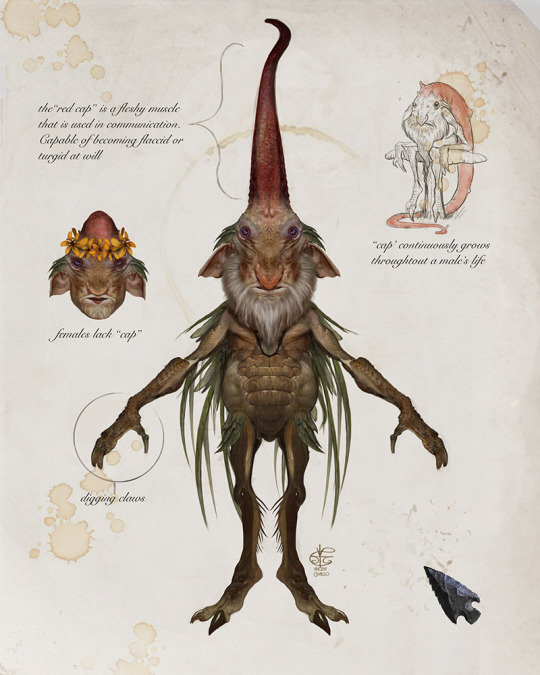
Gnomes are a small, ground dwelling, fairy found across most temperate forests, grasslands and in rare occasions mountain dwellings. They are one of the few fairies to be commonly found alongside human dwellings, having an affinity for their gardens. While most fairy beings can be seen as pests, the Gnome has managed to sway favor as they speak to a relatively good sign for agricultural communities. Having a Gnome is a good sign your crop is healthy and being tended too.
While most fairy species live relatively peacefully alongside one another, the Gnome is one of the few fairy species who do engage in warfare. This animosity is particularly found with Pixies.
Their “red cap” has become the moniker of the species. However this “cap” is not a piece of fashion, but a highly sensitive sensory organ used to help travel in their deep underground dens. They also act as a silent way to communicate with one another in dense brush or long grass. Only males of the species possess one. Female’s caps are small and dome-like, which they commonly adorn with flower crowns. The male’s cap doesn’t always remain active, they can actively render their cap flaccid, allowing them to burrow and squeeze into tight spaces. A male’s cap will grow throughout the course of his life, some reaching lengths double their body length.
#concept art#creature design#fantasy art#creature concept#concept design#monster#fantasy#fairy#speculative biology#fairies#conceptart#creaturedesign#bestiary#artistoninstagram#monstergram#magicthegathering#dungeonsanddragons#fay#faeries#pixie#digitalart#celtic#irishmythology#scottishmythology#fantasyart#mythologicalcreatures#folklore#gnomes#gnome#digital
571 notes
·
View notes
Text
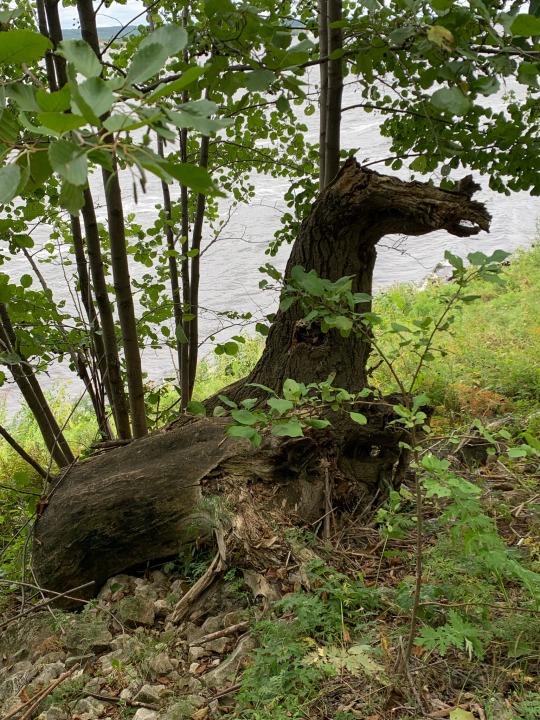
Folklore knowledge tells me I should probably skedaddle and enjoy the river elsewhere
1K notes
·
View notes
Photo
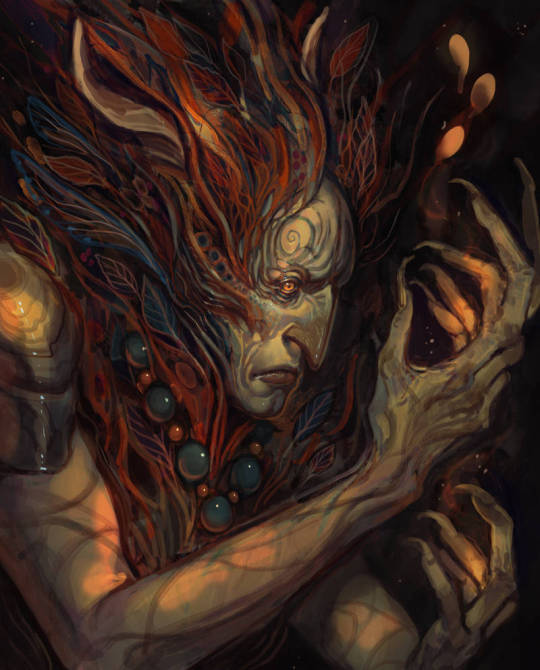
Faerie Creature by Woodenpencilbox
This artist on Instagram // RedBubble
549 notes
·
View notes
Text
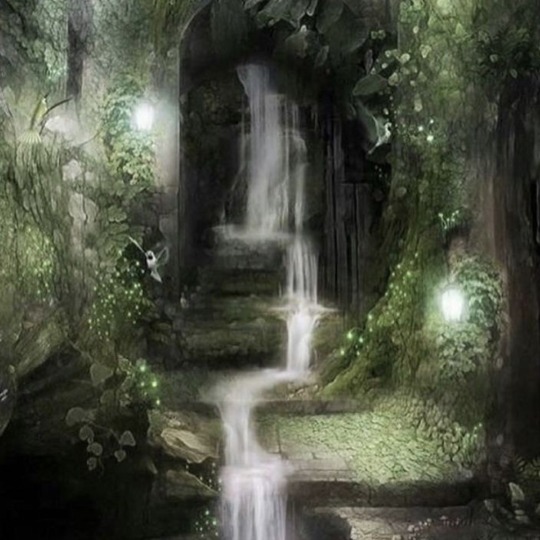








#moodboard#aesthetic#icons#indie#pinterest#naturecore#fairy aesthetic#fairy cottage#fairies#fairycore#fairy tail#fae aesthetic#faerie#faecore#fae folk#fae#folk magic#folklore#goblincore#goblin girl#green goblin#nature#mother nature#forest aesthetic#forest#forest cottage#forest core
477 notes
·
View notes
Note
Do you have more fae!Dick headcanons, but from the batfam or his friends pov? 🥺
Check out this awesome post for a phenomenal addition to the Fae verse!
But in case you wanna stick with only Dick being fae, here’s some more headcanons for you, hehe ✨ I can never say no to doing more 👏
I don’t know enough about Dick’s friends to do a good pov for them, but here’s Bruce and Jason for now 💚
Bruce
Bruce knew something was other about Dick from the moment he started screaming when his parents fell and every single animal inside the circus went wild
Dick is a strange child. he never lies, but he’s got this uncanny ability to maneuver around the truth and make it bend to his will. It comes in handy during his Robin days, but Bruce will be the first to admit it creeps him out a bit. Even thinks that sound like a lie on surface level and up being truthful. To the letter.
Contracts. During their time as Batman and Robin, Bruce unknowingly enters into multiple little deals with Dick without being aware of it. Dick never takes advantage, but there’s one instance where Bruce finally realizes how important it is to leave absolutely no loopholes in orders or wordings when Dick nearly kills someone and it still falls into the terms of their agreement
The manor. Things have never been completely normal about the ancestral home, but with Dick around the walls seem to breathe. There’s always a light on behind some window even when it’s late and Alfred is long asleep. At night something scratches along the walls and the scent of rain and mushrooms lingers in the air. Neither Bruce or Alfred ever find its source. Hallways become long and winding when you’re half asleep. The walk to the restroom ends up being at least ten minutes.
Bruce yells at Dick and uses his full name for the first time and Dick just— folds. It’s not his true name, but he treats it as such. And Bruce is horrified at the way Dick’s entire form seems to warp and gain new joints and twist itself outside the human imagination. But then he blinks and it’s just Dick again, glaring balefully, hissing at Bruce not to use his name in anger. Ever. Bruce is too startled to do anything but promise he won’t.
Promises. Dick uses them sparingly, but when he does he upholds them with a vengeance. Bruce learns to never, ever make Dick promise something that will endanger him. Because dick would still follow through on it blindly.
Promises made by other people. Dick becomes vindictive if he thinks someone isn’t upholding their end of the bargain. The first time it happens, a simple thing about being home in time for dinner, Bruce got assaulted by rabid deer with curiously sharp teeth on his way to the car. In the middle of Gotham City. Bruce and Dick have a serious talk afterwards.
Jason
Dick is less than thrilled when Jason is declared Robin. Fae are possessive. That’s his name Bruce gave away. That’s his family Jason is infiltrating. Dick wants Jason gone. (Bruce barely manages to stop the murder of crows from shoving Jason off a roof)
Jason doesn’t realize there’s a pissed off fae out for blood. Bruce has a hard time rallying Dick, but he manages. Ergo; Jason thinks the manor is the best thing since sliced bread and he’s super excited about meeting Dick. He joins Alfred in making Dick’s favorite meal for his official visit and unknowingly ends up winning Dick over with it. An offering of favored food to fae creatures goes a long way in earning their favor. And Dick is no different. It helps that the food is genuinely delicious and Jason jumps at the chance to refill his plate. Jason unknowingly dodged a bullet there.
Dick becomes protective of Jason. Jason is his now in the same way Bruce and Alfred are. They’re human. He’s fae. They’re so very vulnerable and susceptible to injury and manipulation.
Jason avoids wandering the halls of Wayne manor alone for the longest time because he always feels there are eyes following him. (They are.)
The manor, reacting to Dick’s inherent magic, shortens each of Jason’s routes. It creeps Jason out even more
Sometimes there are feathers at the foot of Jason’s bed. He doesn’t know what kind of bird they could be from. When he shows them to Bruce the man just sighs
Jason has a temper tantrum and retreats into the woods behind the manor. He can’t find his way back until he calls out for Dick and suddenly the manor looms behind the next tree
#fae dick grayson#faerie folk#pagan folklore#the things that live in the woods#I’m not going with traditional fae I’m going with the creatures my family told me about#they undoubtedly are fae#just not the ones usually portrayed in media#it’s the old folklore handed down through generations#jason todd#batfamily#dick grayson#batfam#bruce wayne#robin#headcanons#ghost talks
325 notes
·
View notes
Text

I wish I knew where this came from😭
#fairycore#fairy#fairy lore#fairy aesthetic#fae#faery#mythology#fairies#witch#witchblr#pagan#paganism#witchcraft#fairy witch#fairy witchcraft#faerie lore#faerie folk#faerie folklore#faerie#fae folk
54 notes
·
View notes
Text
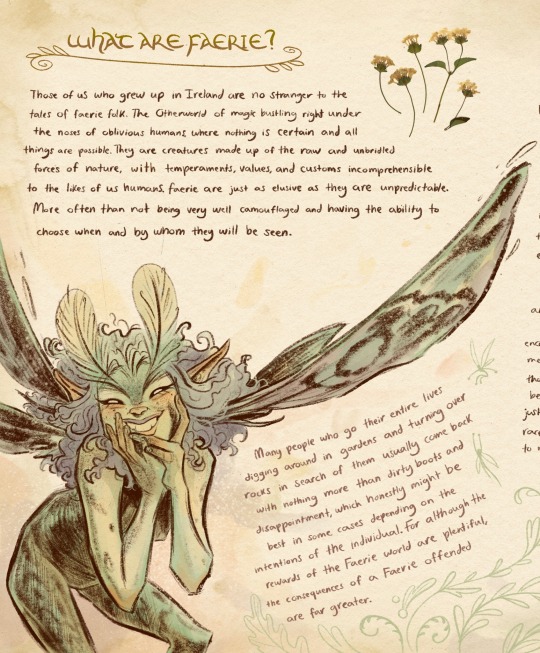


Spread 2: ✨What are Faerie?✨
TEXT: “Those of us who grew up in Ireland are no stranger to the tales of Faerie folk. The Otherworld of magic bustling right under the noses of oblivious humans, where nothing is certain and all things are possible. They are creatures made up of the raw and unbridled forces of nature, with temperaments, values, and customs incomprehensible to the likes of us humans. Faerie are just as elusive as they are unpredictable, more often than not being very well camouflaged and having the ability choose when and by whom they will be seen.
Many people who go their entire lives digging around in gardens and turning over rocks in search of them usually come back with nothing more than dirty boots and disappointment, which honestly might be best in some cases depending on the intentions of the individual. For although the rewards of the Faerie world are plentiful, the consequences of a Faerie offended are far greater.
But who am I to say anything about the people who don't take every necessary precaution when entering the domain of the Fae? I still find myself running into the forest with reckless abandon, and it was that very habit that led me directly into their path. Stupid, I know. But hey, one doesnt necessarily ever expect to be quite literally hoasted off the ground directly into the giant palm of a Faerie on her daily escape to her treehouse! Now you might argue I should’ve expected as much, considering Fae tend to be drawn in by large displays of emotion, and I was crying that time around.. To which I would counter argue that this wasnt the first time I’d ran crying into the woods, and although the idea of a possible Faerie encounter was always on the back of my mind, I still wasn’t mentally prepared. Luckily for me, that particular Fae would go on to became my closest friend, Aiden, who just so happens to be a part of the race of Fae I would come to most intimately Know.”
< (Previous spread) (Next spread) > <<(beginning)
#the crann of the fae#aiden & aiva#faeries#folklore#fantasy art#fae#illustration#my art#artists on tumblr
618 notes
·
View notes
Note
Hello. I'm writing a story and I'd like to base my magic system on that of the fae's magic? Do you know how their magic works? The rules of their magic? I've heard of things like prices and contracts, but I'd love to know more. Thank you for helping. I love your blog.
In a desperate attempt to prevent this answer from getting far out of hand, I'll try to limit myself to something more practical you can use. However it is important that you understand that many magical abilities, events, and things had their roots in various ancient cultural practices, beliefs, and cultural needs or desires. As these tales were passed down orally they were changed with each successive generation, adapted for the huge cultural changes such as the rise of Christianity or for war and famine or political exploitation. The transition from Folktales (mostly oral storytelling) to the later Fairy Tales (largely dominated by literary storytelling) is an important factor in which kinds of stories are still remembered and can be studied today.
So depending on what historical period, country or locale, and cultural group you're looking at, you could have entirely different sets of faeries who had vastly different kinds of powers and rules. And those abilities and limitations were often the remains of older cultures from whom the stories had been passed down from or who had influenced it along the way, or they were a kind of wish fulfillment of basic needs and desires for a generally non-literate agrarian people, as well as an expression of their values and beliefs.
Let's look at your question. Okay, you want to know how the magic itself works, the rules. Well first let's see if we can get a very brief idea of what magic is. While it would be the work of several books to try and define an etymology and history of magic in all the different cultures connected to Faerie Folklore over the centuries, we can pick out some ideas that were of particular influence.
There are several types of magic anthropology suggests for us. These being: Sympathetic Magic, Divination, and Contagious Magic.
Sympathetic Magic is based on the principle of "Like produces like". For instance if something is to happen to an image of someone, it shall also happen to the actual person.
Contagious Magic is based on the principle that if a thing was once connected to or in contact with something else it can still influence it even when they are apart. Believers would hide their fallen teeth, nails, hair trimmings, clothes, or feces from what they believed were malevolent supernatural forces or practitioners of magic.
Divination, which you may be more familiar with, is the procedures and ways in which knowledge of a certain event or of some future event are determined.
But these terms don't really offer us a very clear idea of what's going on with this idea of magic. Alternatively we can think about the different methods in which people would practice magic. Spoken words, writing, or symbols of power were thought to have magic in a number of different cultures. While in animistic beliefs even ordinary items could take on magical attributes as well as a spirit.
The sources of power for this magic were varied. Anything from nature, deceased humans reincarnated and willing to intercede, and sacred or secret knowledge of the world and realities it hides from common knowledge.
In medieval France and Britain there was an idea where women were magical because they could create new life and give birth to it, the act of creating something itself being the magical ability they possessed. So too were other acts of creative work such as cooking, mathematics, and various types of craftsmanship viewed as a kind of magic. It's unlikely that these women, scholars, and craftsmen were viewed as magical practitioners, but the idea of the work itself being a kind of hidden magical knowledge made it into the oral and later literary storytelling and remains there to this day.
Even in contemporary fantasy there are remnants of this idea that crafting itself is a kind of magical knowledge. Think of all the items in literature that are magical. Cloaks, wands, food, weapons. Even everyday items such as a looking glass can become a magic mirror, or a pair of shoes the enchanted seven league boots.
A great deal of Faerie magic in folklore seems to have been a mixed kind, with different types of magic for different situations or peoples. For instance the story of Rumpelstiltskin shows a heavy emphasis on the magic supposed to be inherent in finding the True Name of a thing and the apparent delight in deals and agreements, especially exploitative ones. Other stories present us with Faeries and magical beings who rely on rituals of certain words or events that must take place for a magic to be effective, items combined or crafted in a specific way with specific ingredients or words of power to make charms, and a large variety of abilities that suspiciously have a great deal in common with medicinal practices.
There is, of course, the question of Glamour. Initially a kind of illusion magic, such as in the Ballad of Tam Lin where the titular Tam Lin was "transformed" into a number of frightening shapes in order to try and get his lover, Janet, to let go. It can also be used to disguise the faerie themself, or make a cave appear to be a beautiful palace, or a pile of leaves into a grand feast.
Strangely, there are also many folktales that describe Faeries as having actual powers of transformation, being able to shift their size and form, and the limitations differed from tale to tale. Several variants deal with the contradiction of Faeries who are somehow both intangible and tangible at the same time, or only tangible in certain conditions.
Wings are common in Victorian Art of faeries, but in older stories there are many depictions of Faerie beings who can simply fly without them.
Folklore studies doesn't really make it clear what abilities the Faeries were supposed to have or how those powers worked, and this problem is only muddled further by the lack of surviving materials on these cultures, and the slow influence of changing generations and storytelling that time has upon our existing texts and materials.
What you mention, however, is the prices and contracts. The idea of tricksters who will wheedle and bargain and use clever words to get what they want is as old as myth itself, and throughout the history of folklore and fairy tale there are countless trickster characters. Though the Faerie are drawn from multiple different sources they are known in more than one place as having a penchant for trickery or malicious behavior to go with their supernatural abilities and powers.
Despite looking, I haven't been able to pin down any particular point in which they began to be associated with deliberately ill intended contracts, it's certainly easy to see that throughout the medieval period and onward the Fae definitely had a strong connection to the idea of bargains and deals, often being incredibly upset (not to mention exceedingly dangerous to all around them) should that contract be broken by the human party usually involved.
In many stories the human's ill fortune is caused by them agreeing to things they thought they wanted, but turned out not to be happy with when they got it, or found that they weren't prepared for the true scope of the price they agreed to when they made the deal. Since the Fae do not care whether the human likes the deal as long as it is upheld as agreed, they can understandably be very annoyed when a human breaks the agreement and still thinks themself entitled to the treasures and pleasures they got from said deal.
In contemporary fantasy we might be able to guess that the connection between Faeries and their supposed interest in the true names of things, as well as their often mischievous or maleficent nature, somehow was combined with this tendency in fairy tales to make deals and bargains with mortals. It's conjecture on my part, but it would definitely explain some of the trends in the depictions of faeries in modern literature. It's not a huge stretch to imagine that over time magic in literature came to be directly involved in those deals as well, not just enforced by a deal-loving being with magic, but being enforced by the nature of the magic itself.
28 notes
·
View notes
Text
Aaah! Here it is!!

CARTOON SALOONS IRISH FOLKLORE TRILOGY!!!!
@irishthings
#cartoon saloon#cartoonsaloon#the secret of kells#wolfwalkers#song of the sea#ireland#irish#irish things#irish folklore#crom cruach#selkies#faeries#wolves
630 notes
·
View notes
Note
Apparently in Scotland I think, they would believe autistic children are we’re called “children of the fae” that they took the kids and now they are one of them. And the best part is, they are so chill about it, like “ya, there’s nothing we can do, he’s like this and always has” like hell ya that’s so cool, I wanna go dance in a fairy ring, that’s awesome. 🤩♾️🌈
Yep there's folklore about changelings in many parts of Europe, including Britain, Ireland and Scandinavian countries! Traditionally they're about children who have been abducted by the fae and replaced with a changling, and it's been theorised that this was a way to explain the behaviour of neurodivergent children as well as those with other diabilities. The 'replaced' child might be particularly mischevious, communicate differently, look different, or have abilities far beyond their age, all of which were seen as characteristics of a fairy.
I'm afraid it's not always a positive story though; unfortunately it was often used as an excuse to abandon children who were considered 'different'. Fairies didn't always have the nice reputation they have now - they were often seen as dangerous and unpredictable.
That said, growing up I often felt like I wasn't really of this world, and I like the idea of the reason being that I'm actually one of the fae. It's a really interesting topic to think about, and I've always been fascinated by folklore and its origins in general.
#autism#actually autistic#folklore#faerie#neurodivergent#cw ableism#cw child abuse#ask#cinimonrolls-n-chaos
195 notes
·
View notes
Text


faerie thoughts...
#oc stuff#pareidolia tag#worldbuilding#speculative biology#folklore#fairy#faerie#fantasy#bestiary#lore#this is part 1 kind of... connecting it a bit to some tomte thoughts as well#yes this is partly sparked by wanting fantasy hrt in pareidolia dont think about it too much
230 notes
·
View notes
Text
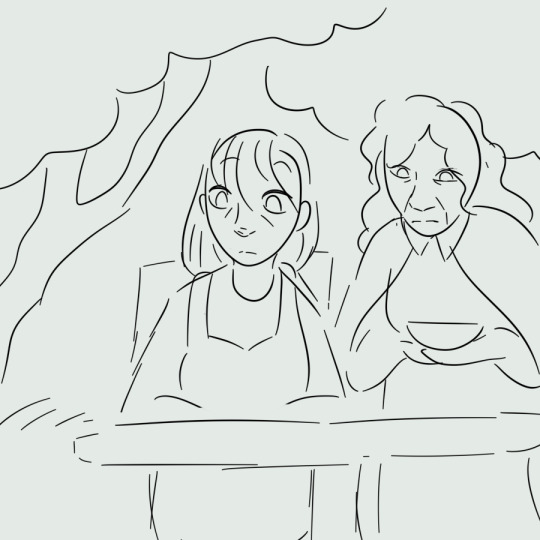
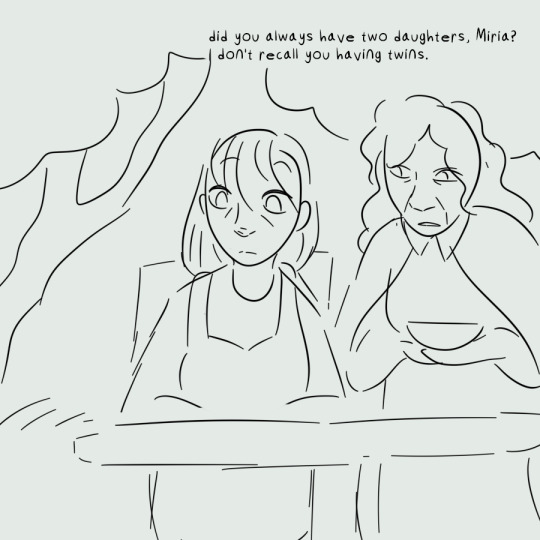

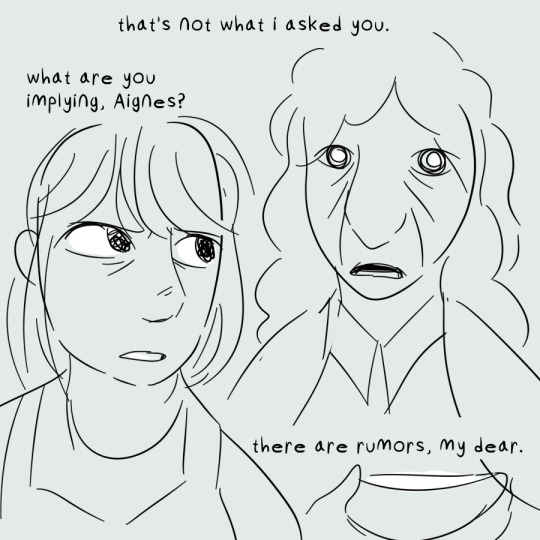

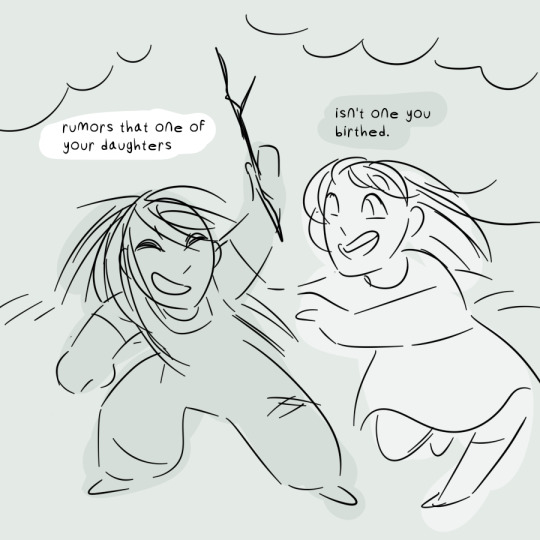

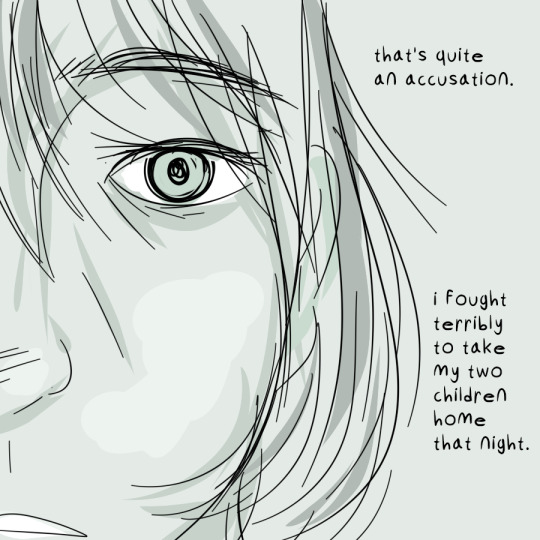
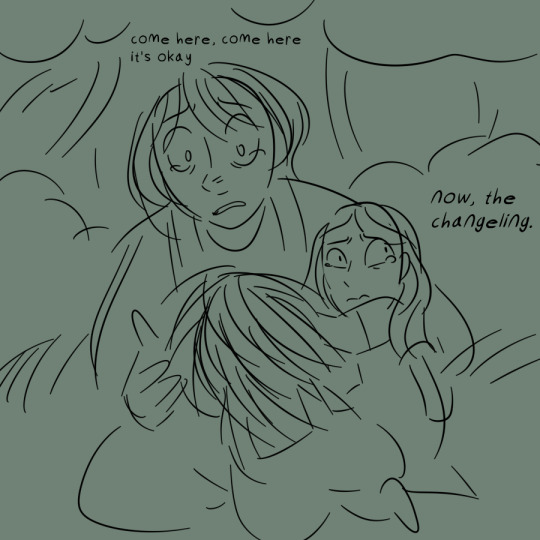
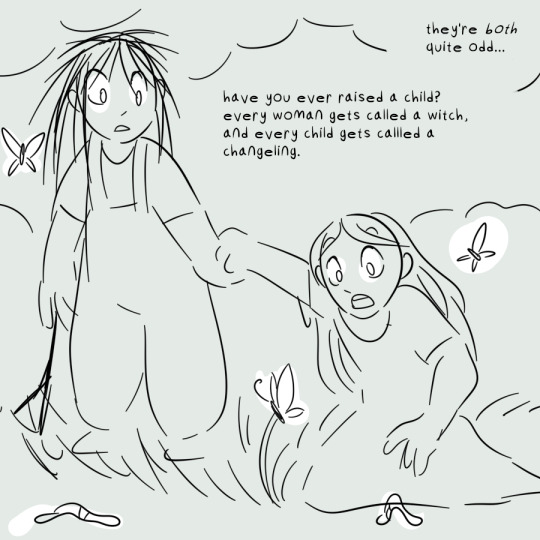
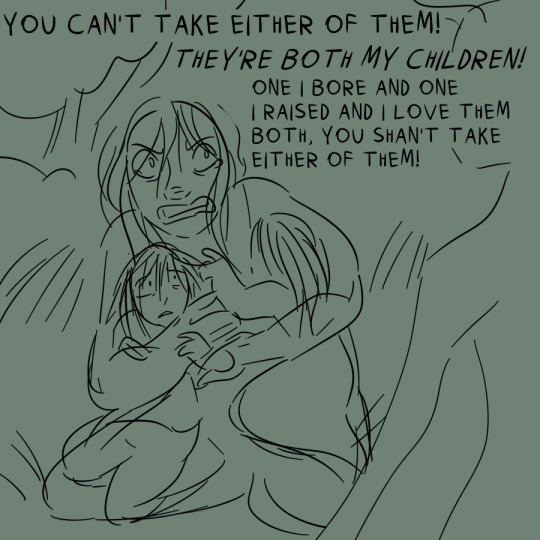

something about weird little girls and weird old women and raising kids and changelings
#art#comic#folklore#digital art#digital sketch#changeling#fae#faerie#fairy#mother#motherhood#parenthood#fantasy#fantasy art#fantasy comic#fae art#changelings#bug#bugs#tw bugs#tw insects
321 notes
·
View notes